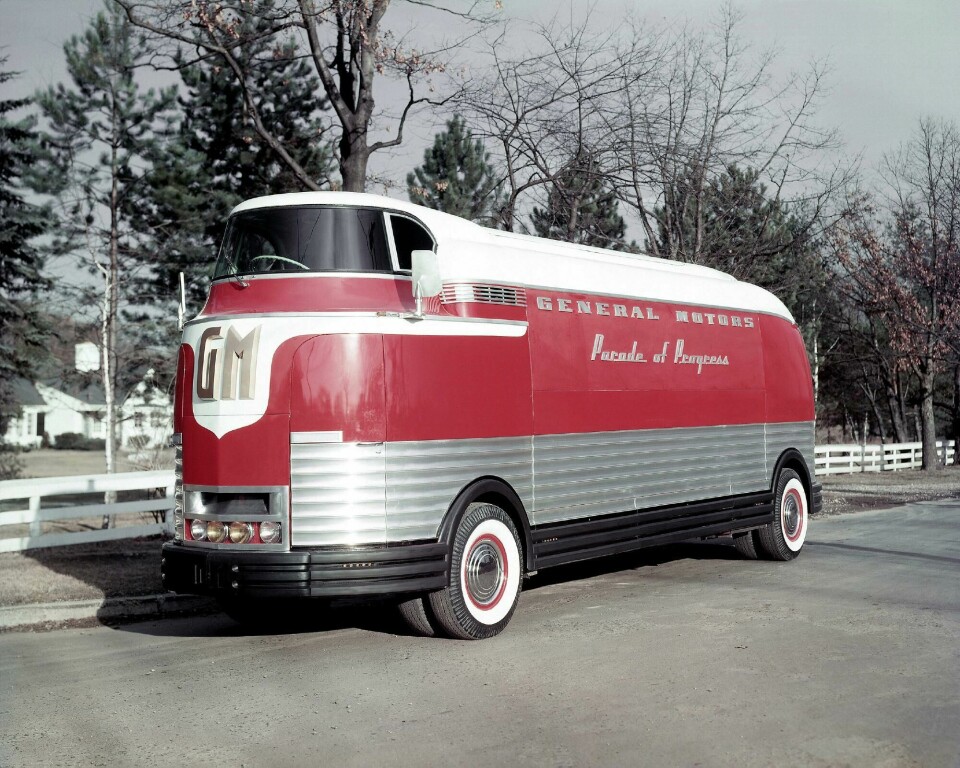
Concept Car of the Week: GM Futurliner (1939)
The 1938 Buick Y-Job is rightly famous for being the world’s first concept car. But while the Y-Job was being created by Harley Earl and the designers at GM’s newly-named Styling Division, the team was also working on a project much larger in scale: the Futurliner
The 1938 Buick Y-Job is rightly famous for being the world’s first concept car. But while the Y-Job was being created by Harley Earl and the designers at GM’s newly-named Styling Division, the team was also working on a project much larger in scale, both literally and figuratively.
The Futurliner – future spelt without a last ‘e’ so GM could trademark the name – towered over other vehicles. Created to transport GM’s ‘Parade of Progress’ travelling exhibition around North America, 12 of these huge transporters were built in 1939/1940.

The Parade of Progress was created by GM’s research director, Charles ‘Boss’ Kettering, as a touring road show that brought future technology to communities across the United States, showcasing breakthroughs like the jet engine, a microwave that could fry an egg, and even television. It began in 1936, with eight, purpose-built Streamliner trucks, and these were replaced in 1941 by the Futurliners.
Each Futurliner’s exterior is awash with Art Deco details, with industrial designer Robert E. Bingman’s exterior celebrating the best of engineering and man’s ingenuity of the time. Each truck featured eight wheels, four on each axle, with each 20-inch wheel rim wrapped in a tyre custom-made by US Royal, and featuring ‘General Motors Parade of Progress’ script on its whitewall band.
A wide swathe of chrome swept around each vehicle, hinting at the technology held within each vehicle, while the aerodynamic form borrowed heavily from the locomotive aesthetic of the time. The designers were also inspired by the Boeing Flying Fortress bomber launched in 1935, and incorporated a glass dome for the cabin, designed by Raymond Smith, although the design was later changed as it made the truck’s interior extremely hot.
A white winged graphic motif flowed back from the huge gold GM lettering on the truck’s nose, while the colourway, and gentile 40mph top speed, earned the parade of Futurliners the nickname ‘the red elephants.’

Although each vehicle is huge, it only contained seating for three people, with the driver accessing the three-metre-high cockpit via a door ahead of the front right wheel and a set of six stairs. The driver sat centrally, on a chair upholstered in two-tone lime and hunter green vinyl. A bench seat for two was located in the rear of the cab.
The reason for the cramped conditions was because most of the vehicle’s space was given over to the exhibit it was carrying; each Futurliner showcased a different new technology, ranging from the devices that would be present in the kitchen or living room of the future, to live science demonstrations.
The side of the vehicle included two electrically-operated 4.9-by-1.5-metre doors that opened up to reveal the display inside. With the doors folded up, a 4.9-metre long light bar, compising 36 fluorescent tubes, was raised from the roof, powered by a portable generator, and each vehicle also had a powerful PA system.
The 12 Futurliners were part of a larger convoy of 10 truck, four pick-ups and 18 cars, the latter transporting the 1,500-seater Aer-O-Drome auditorium tent that also formed part of the Parade display, plus the 60 people it took to erect it.

The Futurliners were given an upgrade in 1953, with revisions to the cab, the addition of air conditioning and a switch from diesel to petrol power.
Back in 1939, each vehicle cost GM $100,000, which is around $1.67-million today. Following the end of the Parade in 1956, most Futurliners were sold on or donated to the Michigan police.
Despite their size making them difficult to store, nine of the original 12 still exist. One has been converted into a motorhome and another is now a low-loader. Number 11 was fully restored and sold in January this year for $4,000,000, with all proceeds going to benefit the Armed Forces Foundation.




